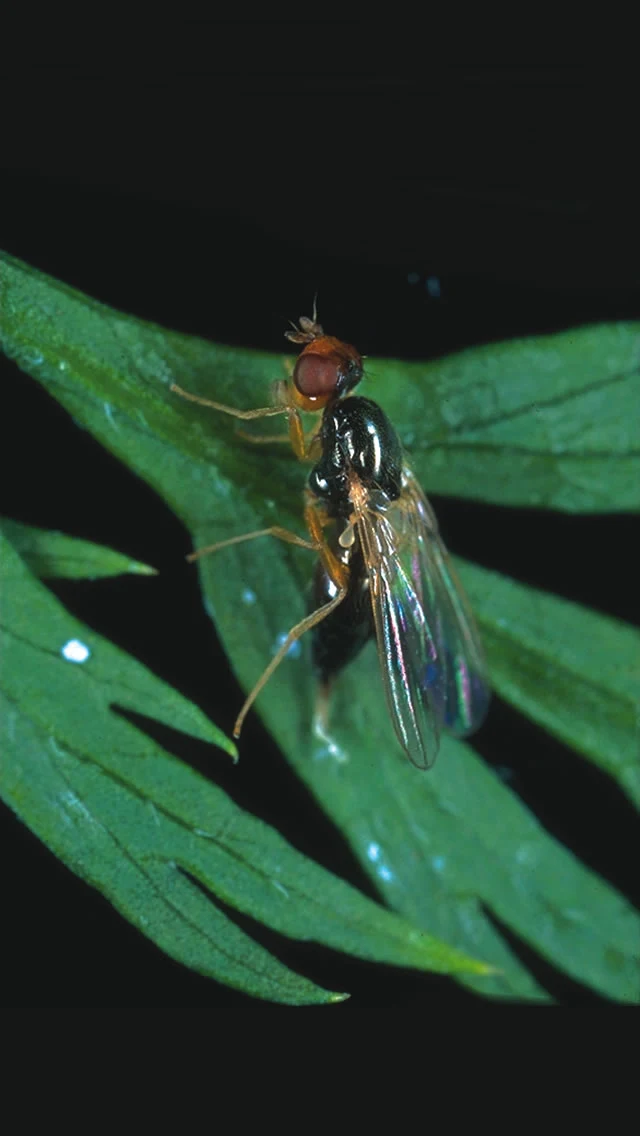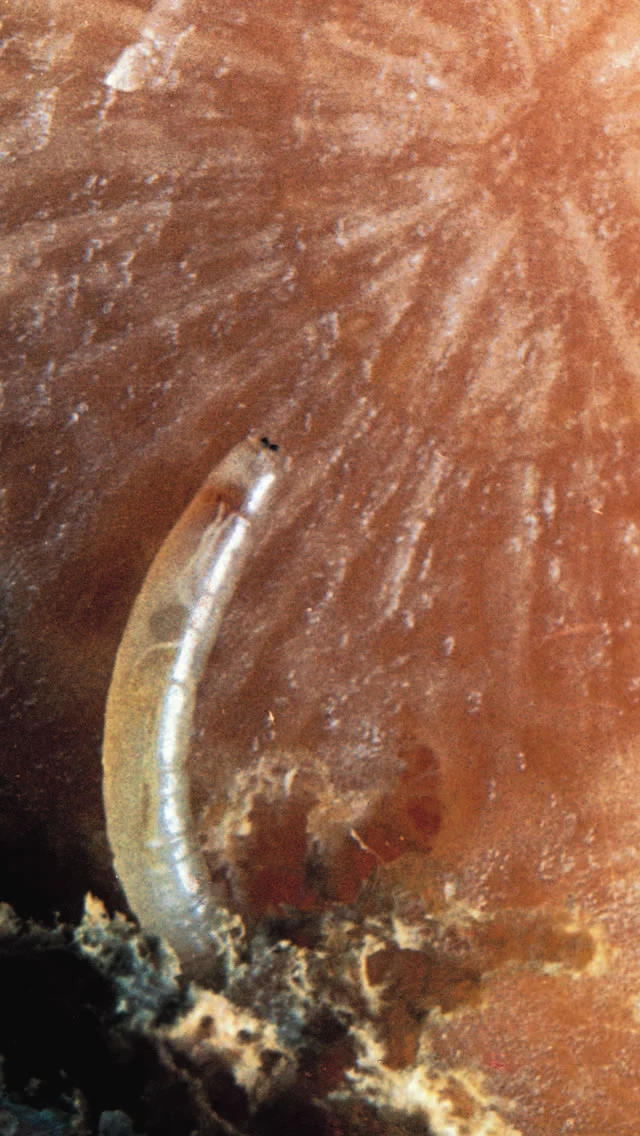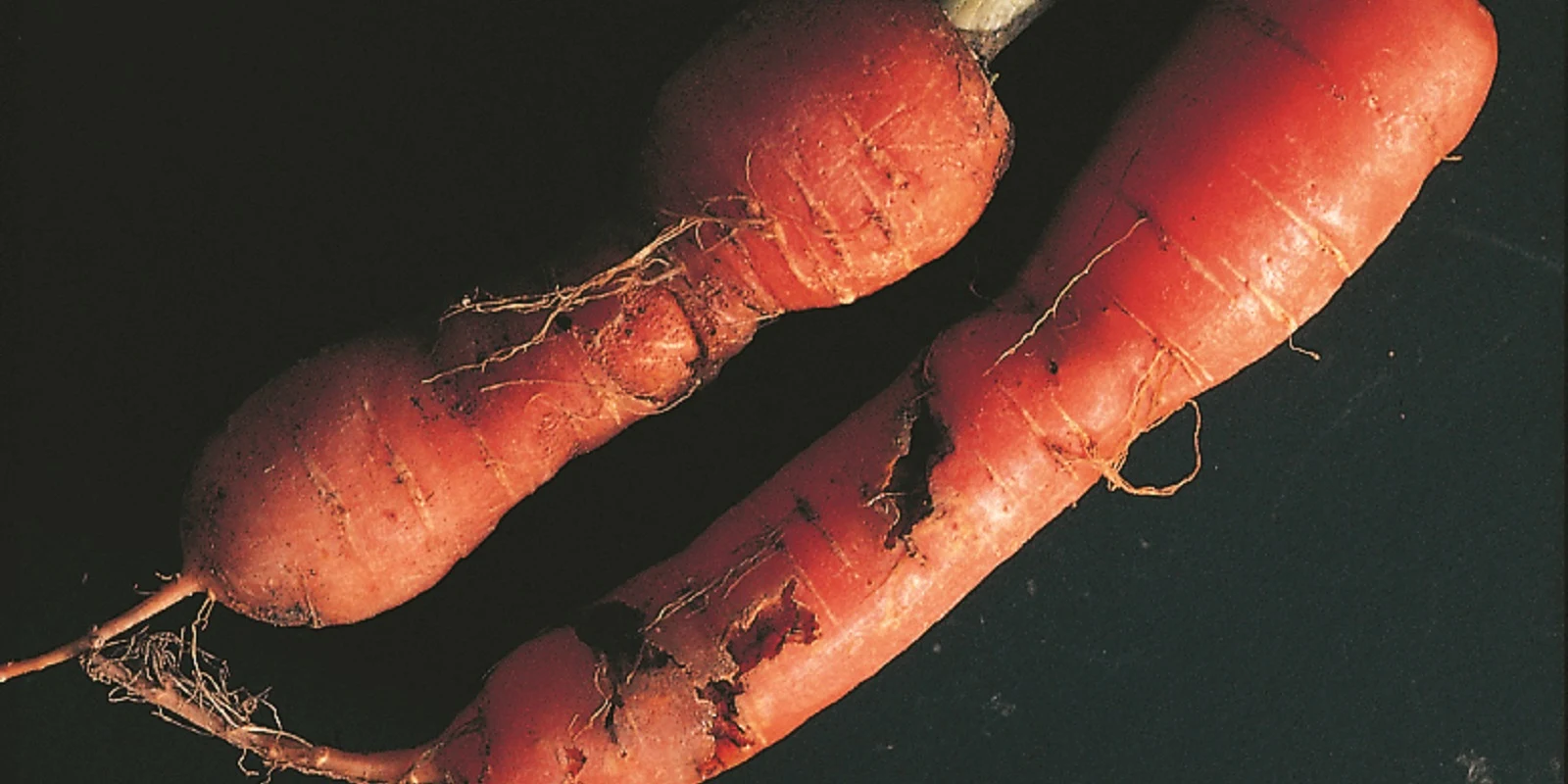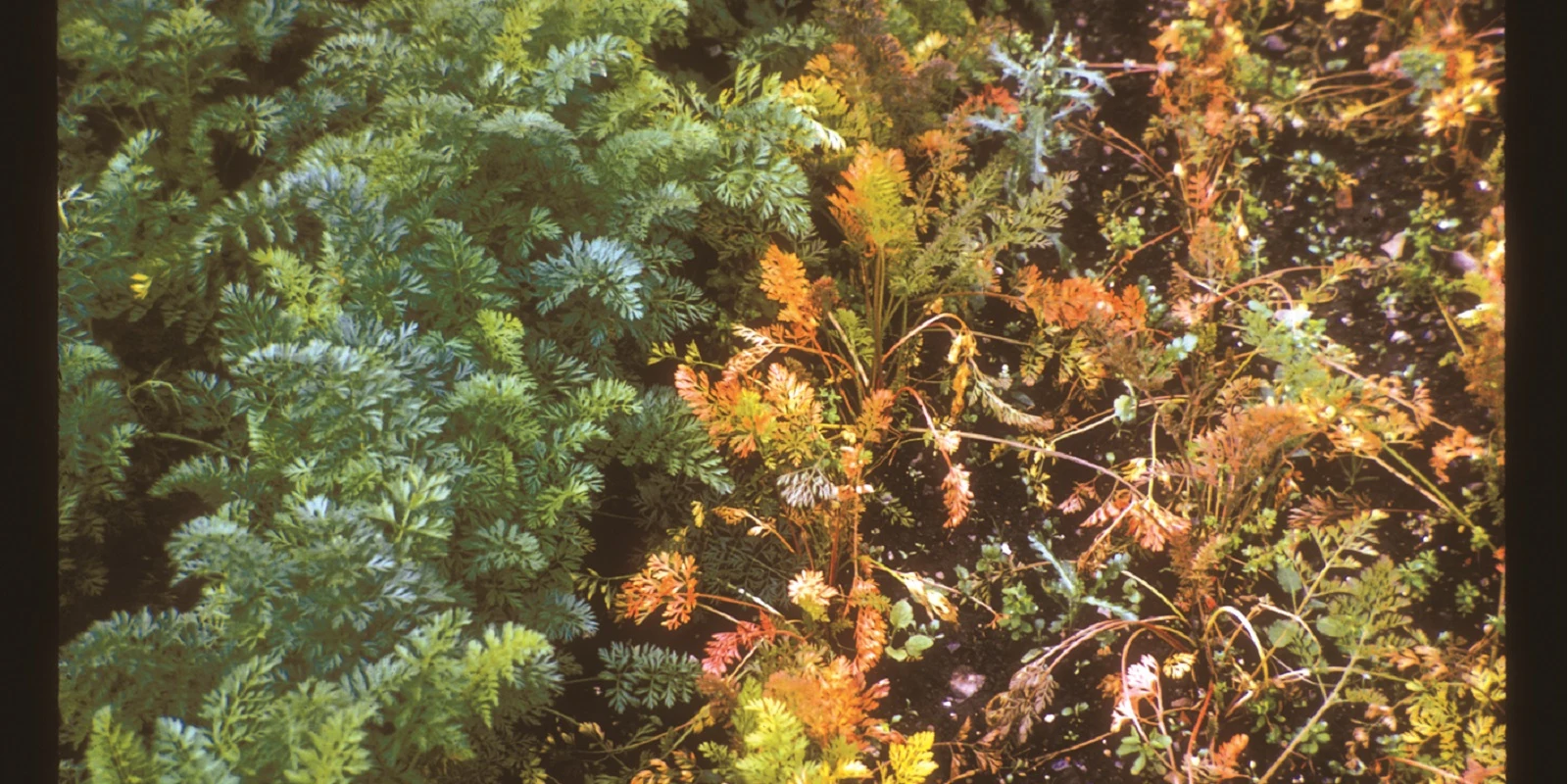
Carrot Root Fly
Psila rosae
Identification
The adult flies are 8 mm in length and are a shiny black colour with a reddish head and light orangey coloured legs. The larvae are cream coloured, slender and up to 1 cm in length.
Symptoms
The larvae emerging from newly laid eggs feed on the root hairs, rootlets and tap roots of the host plant. Early symptoms are wilting and a reddish/yellow discolouration of the outer leaves. Early attacks can result in plant loss but the more common outcome
is that surviving plants are distinctly stunted. As the plant roots develop and enlarge the larvae mine into the roots leaving unsightly characteristic reddish/brown tunnels below the skin surface.
Life-cycle
First generation adult flies are often on the wing when cow parsley is in full flower at the end of April. They migrate into crops from nearby sheltered areas such as hedgerows. The adults are very weak fliers and rarely rise above a height of 50 cm. Eggs are laid into soil crevices around the base of host plants. Depending on temperature the larvae usually hatch in about one week and feed on the plant roots. Further damage can be caused by the larvae moving from plant to plant. After completing three growth stages (moults) the larvae pupate in the soil. The transition from egg to adult can be completed in 3 months.
Carrot flies can survive the winter in a variety of different ways. The adults can survive by sheltering in warm protected environments, the pupae can overwinter in the soil or the larvae can survive in the roots of host plants, especially in crops which have been covered with straw for protection from cold weather.
There are usually two generations per year but a third generation is possible especially if temperatures remain high into the autumn. The first generation arises in late April/early May and the second is on the wing in late July. It is the first two generations which are responsible for economic crop damage.
Importance
Crops growing in exposed sites and fields with no adjacent sheltered habitats will be less at risk.
Crop establishment can be adversely affected but where pest pressure is severe crops can be rendered unmarketable.
Carrot root fly larvae can also invade the roots of parsnips, parsley, celery and other herbaceous plants.
Threshold
Sticky traps located in crops can give an indication of fly emergence which assists with the timing of insecticide sprays. This information can also be valuable for making agronomic decisions on sowing dates and harvesting.
Tefluthrin seed treatment can give early protection and repeat applications of pyrethroids can control adults before eggs are laid. These insecticide sprays will not control larvae feeding below ground. Sprays should be applied in the late afternoon or early evening when the adults are most active.
Complete protection can be achieved by covering the carrot crop with polythene insect netting which prevents the adults from laying eggs in the rows. This is particularly useful in the organic and amateur market.
In the amateur market some progress has also been made with plant breeding. Partial resistance has been successfully bred into some newly released varieties such as ‘Flyaway’.

Carrot root fly larva and damage

Carrot root fly mines on carrots.

Carrot root fly damage - treated vs. untreated.


